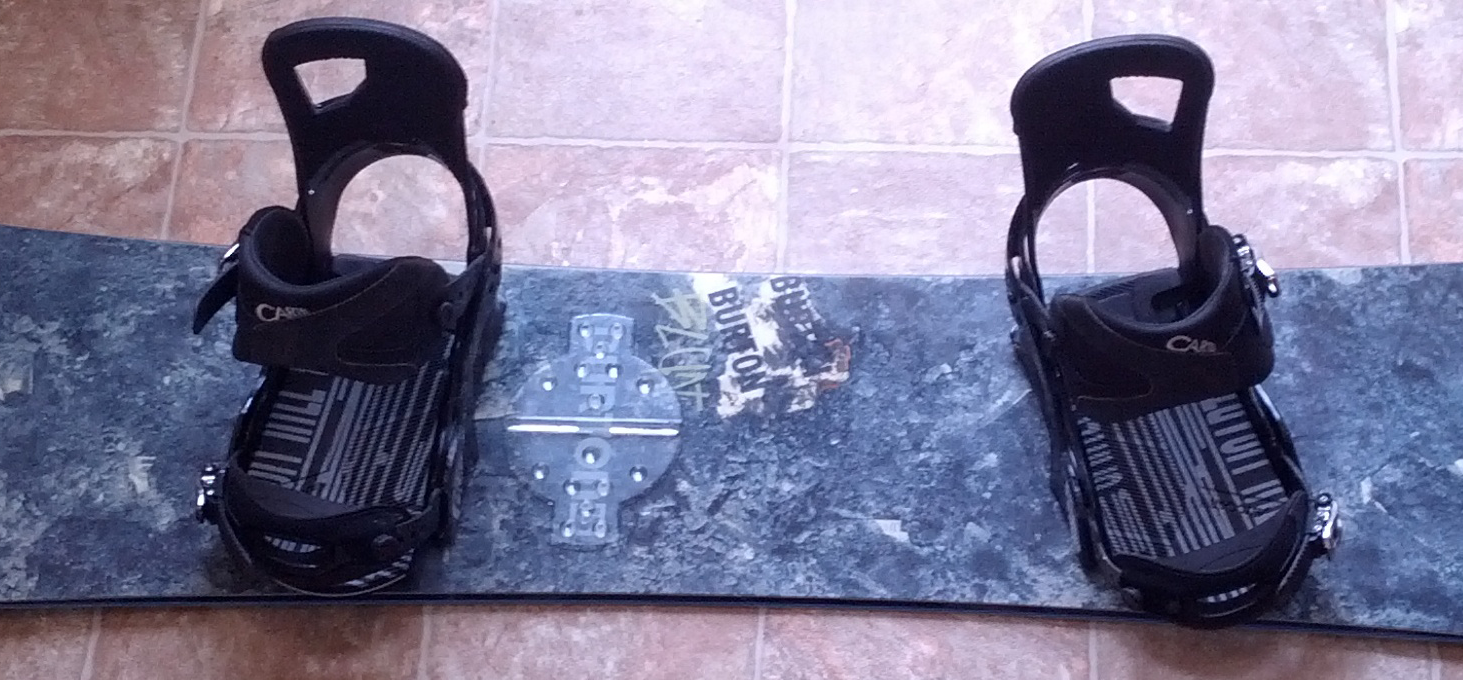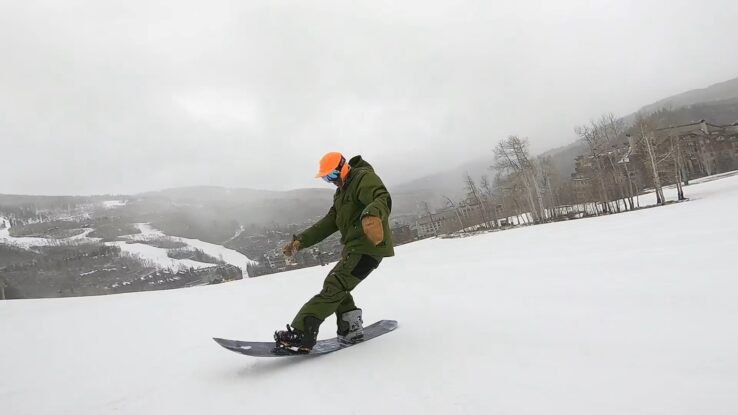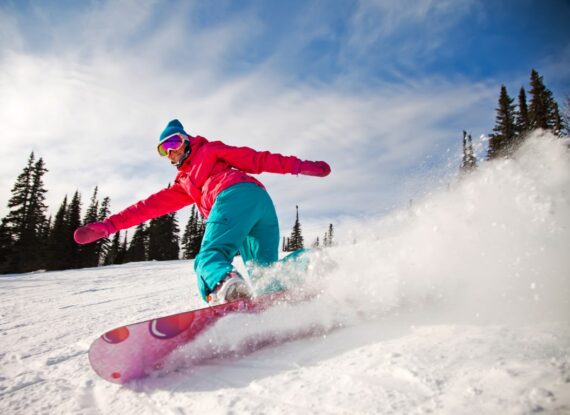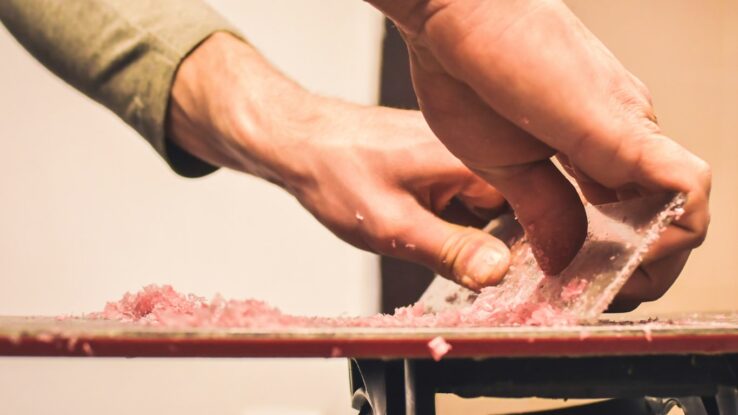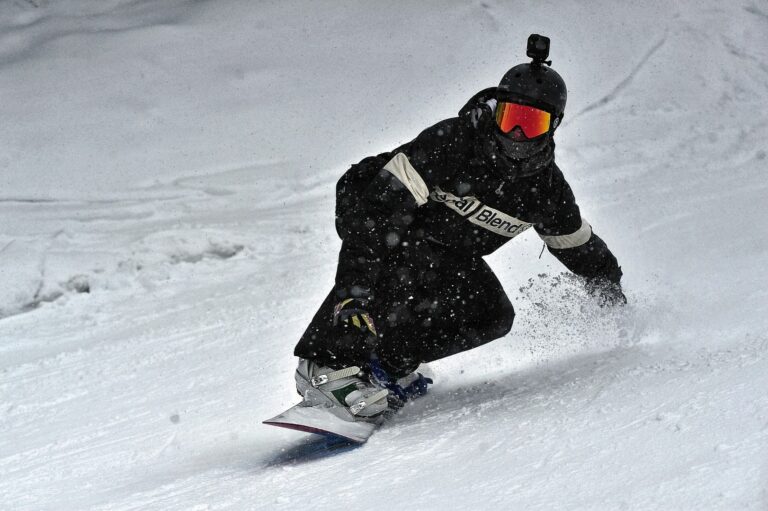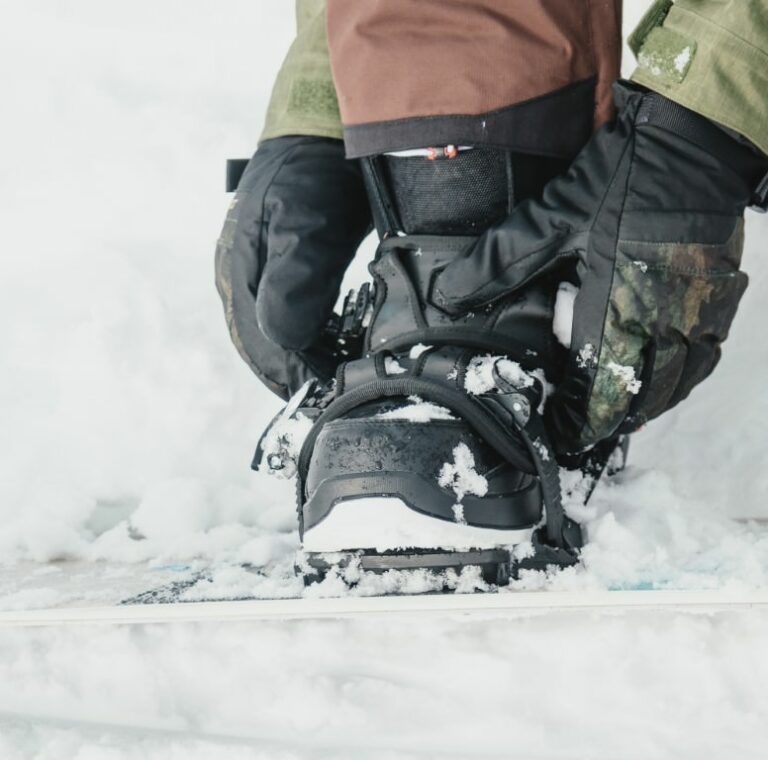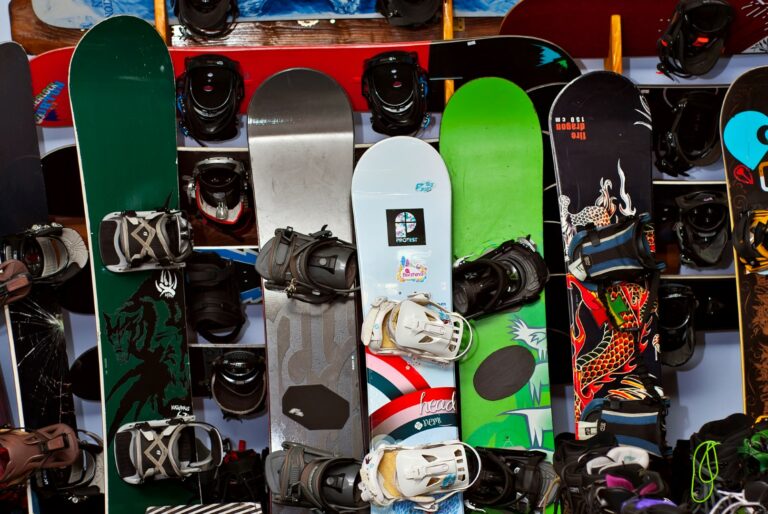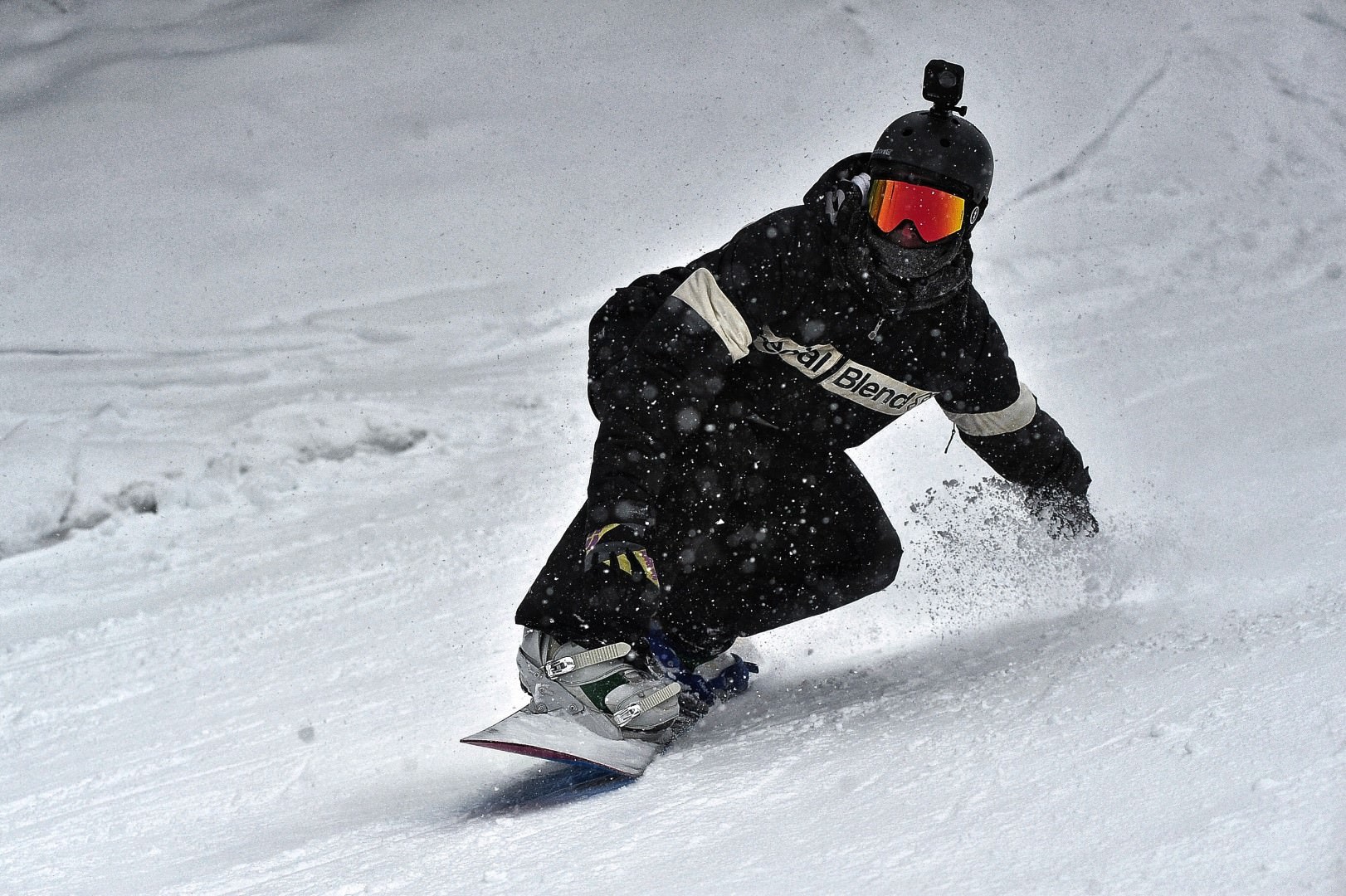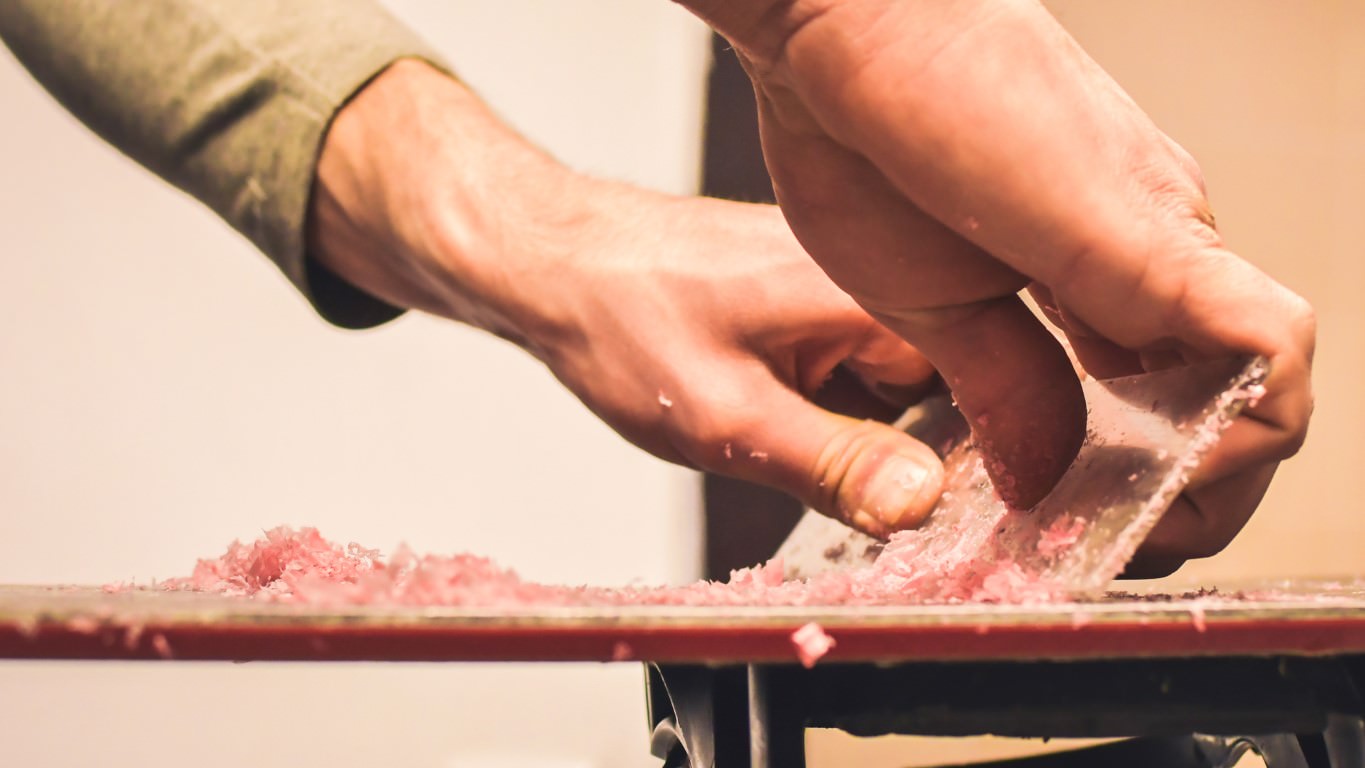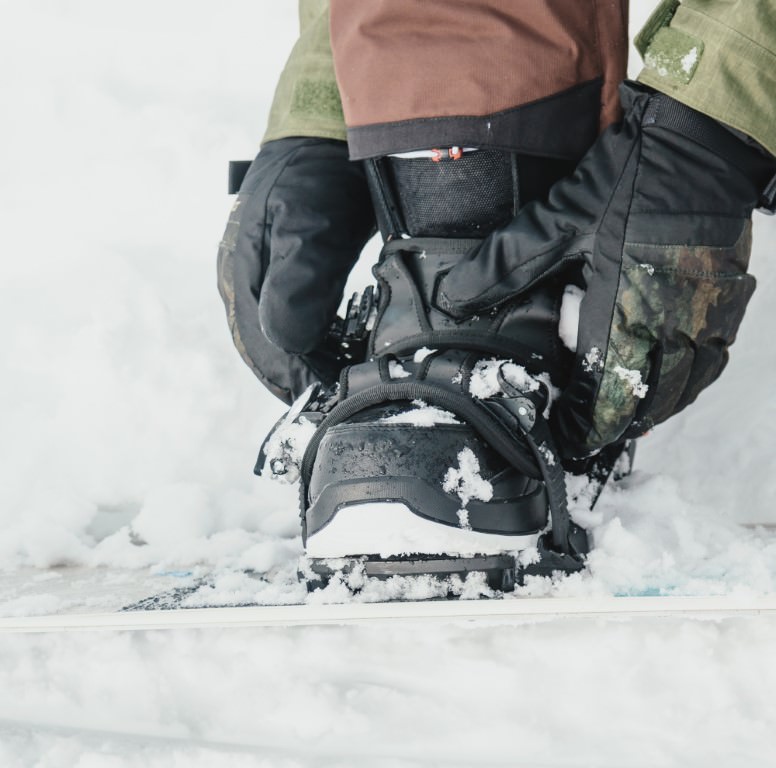Snowboard bindings provide a majority of the control and performance one exhibits when snowboarding. It’s the only piece of equipment that comes with a massive amount of customization to complement the terrain or your personal riding style. Choosing the right type of binding is an extremely important step in your progression as a rider.
It might come as a bit of a shock that although there are many brands of snowboard bindings, there are also several different styles of bindings you can choose from. Each one will have its pros and cons, so it is important to find the best style for your riding and progression goals.
Strap-In Bindings: The Classic Choice
Are you a traditionalist? Do you agree with the statement, “If it ain’t broke, don’t fix it”? Then Strap-In Bindings are what you’re after. Strap-In Bindings use two straps that go across your toes and ankle to secure your foot to your snowboard. The straps use a ratchet and buckle system and can be tightened according to your needs. There’s also a high-back that provides support to your upper ankle and lower calf for heel edge initiation and control.
This type of binding has been the most popular choice of snowboard binding since they were invented. From beginner to professional riders, they can cater to almost any snowboarder or riding style.
Pros
Strap-In bindings provide excellent support, performance and dependability. They are consistently tight for the entire run. You can also do them up standing or sitting down. They hold no matter what, and if one strap breaks, you’ve got a backup that holds your foot into the binding.
Cons
Strap-In bindings can cause pressure points on the sides of your foot. Snow and ice can periodically jam the ratchet system. They are also a bit slower than the new Step-On bindings.
Step-On Bindings: Convenience on the Slopes
Step-On bindings is a technology where you step into the binding, and it locks you in place. It uses a system of hooks and clips that align with cleats on special snowboard boots. Step-On bindings were originally introduced in the 90s and died off due to the lack of dependability and support. Today they have made a massive comeback and, as development continues, could be the Strap-In binding killer down the road.
Pros
Step-On bindings are convenient, fast and secure. You step in and you’re good to go. You don’t need to bend down to do them up, so this system is excellent for those with flexibility issues. Finally, because the boot is in contact with the binding at several points, it can actually cause more responsive riding. They can also be seen as more comfortable as you won’t have any straps pressing against your feet.
Cons
Step-On bindings can lack the support seen in Strap-In bindings. Snow and ice can build up in the system which can sometimes cause difficulty with clicking in. If you’re not used to responsive riding, it will affect your performance as this system severely restricts boot movement. They’re also very expensive and require specific snowboard boots to be compatible with the bindings.

Rear-Entry Bindings: Quick and Comfortable
Rear entry snowboard bindings were invented as a faster and more convenient alternative to Strap-In bindings. Although they are almost similar to Strap-In bindings, the highback can fold backwards, allowing the foot to slide into the binding. The bindings also have two straps that are similar to Strap-In binding but are usually connected. They can be set to a desired tightness prior to riding. Sliding your foot into the binding and pulling the high back into position is all you need to do to do them up.
Pros
Rear-Entry bindings are fast and are seen as a “set it and forget it” option. You don’t have to adjust anything else once you find your desired settings. Quickly getting your foot in and out while standing is seen as an advantage if you have the balance to do this.
Cons
You will never find the perfect tightness for Rear-Entry bindings. The system is designed to be fast but not easily customizable on the slopes leading to some extra movement. Skating can be a nightmare as the high back can become a tripping hazard while in motion. They’re also heavier and can be a burden to put on when you’re sitting down.
Hard-Boot Bindings (Plate Bindings): Precision and Control
Have you ever walked in ski boots? It sucks, right? However, that story changes once you get introduced to the responsiveness and control offered by this type of boot when you’re laying out high speed carves on skis.
Hard-Boot bindings were initially designed as a performance oriented option for alpine racers and high speed carving junkies that wanted to copy the feel of skiing. These bindings are light, strong and extremely stiff. They are classed as Step-In bindings with toe clips and steel bails which lock your boot in place. You need a special boot to use these too.
In recent years, Hard-Boot bindings have been re-engineered for splitboarding. Having a hard-boot system in the backcountry makes uphill travel easier and more responsive in the backcountry. More on this later on.
Pros
The Hard-Boot system is extremely supportive, responsive and light. Less movement in your boots transitions into powerful control. They are also very fast to do up as there are no straps to deal with. Fewer parts mean fewer things to break, too.
Cons
The added stiffness and responsiveness takes time to get used to. This system is usually reserved for advanced to expert alpine racers and high level on-piste snowboarders. Terrain choice is pretty limited too. You can’t use this system in the park or in a freestyle sense. They’re just too stiff.
Baseless Bindings: Close Contact Riding
Throughout the development of snowboarding, there have been a lot of “interesting” concepts coming to market. One of them was the Baseless Binding. Think of a traditional Strap-In binding with no baseplate. Your boot would lie directly on the snowboard, cutting down on weight and reducing response time, giving you a true feel of your snowboard.
The pros, however, did not outweigh the cons, and comfort prevailed. These bindings are in the history books as an interesting attempt at improving performance and shedding weight.
Pros
The speed of edge to edge transitions and feeling of the snowboard are unmatched by any other snowboard binding type.
Cons
You feel everything. Bumps and constant vibrations will terrorize your feet to the point you want to switch over to skiing because it will be less painful. Heel and toe drag can be multiplied. Your foot can also move around on the snowboard because of the smooth topsheet. Enough said? Let’s move on .

Hybrid Bindings: Best of Both Worlds Or…?
Hybrid bindings combine the speed of Rear-Entry with the tightness and support of Strap-In bindings. A common complaint with Rear-Entry bindings was how difficult they were to get tight enough and still be able to slide your foot into them.
Hybrid bindings come with ratchet straps so you can also adjust them or even put them on like traditional Strap-In bindings. This gives you the option to do them up quickly on easy terrain and sit down to strap them in on sketchy terrain when it’s hard to stand up and balance.
Pros
These bindings are fast to do up and also come with the ability to tighten them to your liking. You can use them like regular Rear-Entry bindings or like traditional Strap-In bindings.
Cons
This system has a lot of moving parts and a lot of opportunities for things to break. It’s a bit of an over engineered system that adds additional weight and complications to a snowboard binding.
Splitboard Bindings: For the Adventurous Backcountry
Sometimes, snowboarders like to take a page out of the skier handbook. Seeing their alpine counterparts leave the confines of the ski resort to explore untouched terrain sparked innovation to invent Splitboarding. Splitboarding uses specifically designed snowboards, bindings and sometimes boots.
Just like Ski Touring, Splitboarding requires a specific type of binding that can pivot, rotate and still provide stiffness when going downhill. Splitboarding bindings come in two different types, soft-boot and hard-boot specific. The soft-boot option looks similar to a traditional Strap-In snowboard binding with ratchet straps, and you can use ordinary snowboard boots for this option.
More recently, the snowboard industry has developed a hard-boot system that is very similar to a ski touring system. They provide light, supportive lateral stiffness for easy uphill efficiency. The kicker is this design allows it to ride more like a soft-boot instead of restricting movement like a traditional hard-boot setup.
Pros
Splitboarding bindings should be exclusively used for backcountry only. They are lightweight, strong and provide the best performance and mobility to access the backcountry.
Cons
It is not advised to use these systems inbound. Due to their construction they aren’t meant for the mileage and rough conditions seen at the resort. They could wear down much faster at the resort. These systems are also very expensive.
Binding Flex: Soft vs. Medium vs. Stiff
Snowboard bindings usually come in three different flexibility ratings, soft (1-3), medium (4-7) and stiff (8-10). Different levels of stiffness profiles excel in certain conditions, so it is important to find the right flexibility for your riding style.
Soft (1-4)
Softer bindings allow for easier movements making these bindings suitable for beginners and park riders. Softer bindings allow for a more forgiving ride and easier deformation, making it easier to balance.
Medium (5-7)
This level of flexibility is sought after by most snowboarders. It caters to all-mountain, freestyle snowboarders and offers an excellent level of support, responsiveness and flexibility in all conditions.
Stiff (8-10)
Aggressive freeriders and speed demons push their equipment regularly and require bindings that can hold their shape in demanding conditions. Stiff bindings allow for aggressive performance and fast responsiveness needed for this level of riding in steep and unforgiving terrain.
Choosing the Right Bindings for Your Riding Style
So there we have it. A comprehensive breakdown of the seven different binding types and how binding flexibility can be related to different riding styles. Which style of binding you choose can depend again on riding style, personal preference and terrain choice.
Beginner Snowboarders
Beginners who are just getting into the sport don’t need anything fancy or stiff. They can excel with a soft to medium binding with either traditional Strap-In or Rear-Entry bindings. Rear-Entry bindings can make it easier to put your foot in while standing. Having to stand up with your feet strapped in can be difficult for beginners, but it is a good movement to learn.
Park and Freestyle Riders
With this riding style, you could go with Strap-In bindings. This style of binding provides adequate hold, support and customizable tightness. With a soft to medium flex rating, this binding allows for enough flexibility and movement while in the park.
All-Mountain and Freeriders
These two disciplines can choose either Strap-In or Step-On bindings. The latter provides additional responsiveness and performance because of the additional connection points of the Step-On system. Both disciplines are usually suited to more advanced riders so they can benefit from the higher original stiffness of the Step-Ons. You can’t go wrong with either binding choice but if you’ve got the budget for the Step-Ons, treat yourself.
Backcountry Specific
If you plan on spending most of your time in the backcountry, the only setup you should be looking at is a backcountry option. Honestly, the hard-boot splitboarding system is extremely impressive. It provides the best uphill support that is unrivaled by a soft-boot system and excellent downhill support and movement. Your only limitation here will be your budget.
Best All Around Binding Option?
The best all around snowboard binding option is the one that is tried and true. One that’s stood the test of time and innovation to remain the fan favorite and the most popular on the market.
Strap-In Bindings for the Win
What can I say that has not already been said about the Strap-In Binding? They are fairly easy to install, are dependable and provide excellent performance and safety in all conditions. The only time you’ll have an issue doing up this system is if something breaks, which can be rare if they are looked after.
Strap-In bindings come in different styles with tons of settings to customize and optimize to cater to your riding needs. Am I a traditionalist? You better believe it. As technology continues to improve with the Step-On system, they may rival or even surpass Strap-In bindings one day. I am eager to see how their development progresses.
Conclusion
Choosing the right type and style of snowboard binding can be a tricky task if you’re not sure what you’re after. Each binding will have pros and cons, but you can’t go wrong with Strap-In bindings. If you have the budget for Step-On’s they are also a great system to invest in.
No matter what you choose, your choice is not forever, and it’s easy to sell and buy something else if you so choose. Some resorts or shops will let you demo different brands and styles, which gives you a better idea of how they perform with your riding style
There’s a lot to try, so don’t get bogged down and overwhelmed with choice. Grab some Strap-In bindings and go from there.
